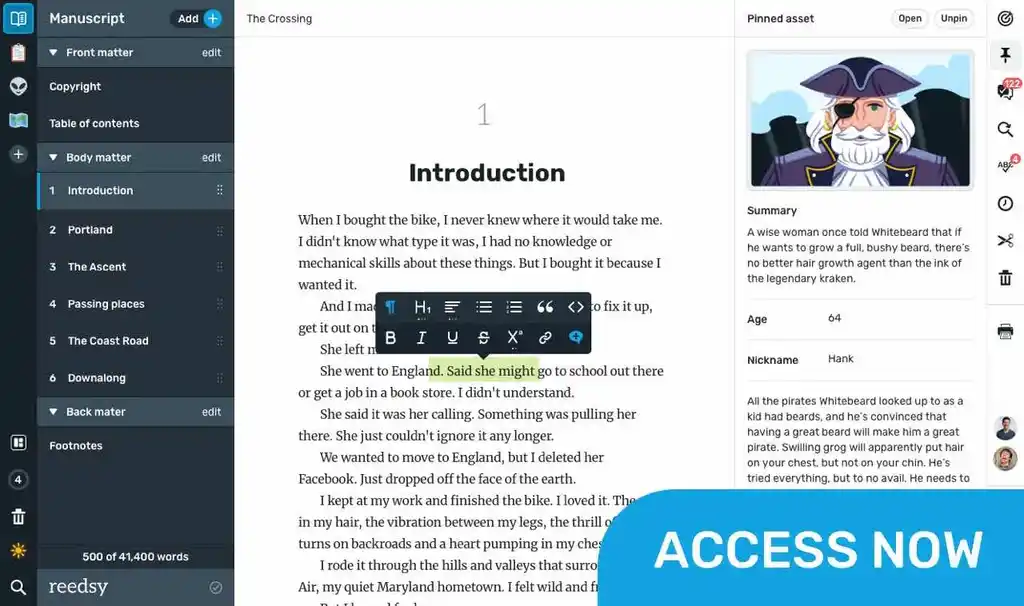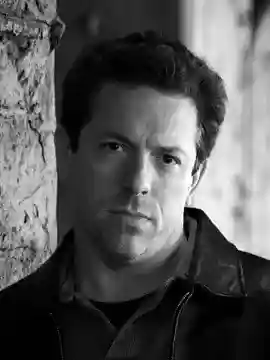So the first thing I want to establish is some sort of baseline understanding of what psychological horror actually is. Here is a good definition from Wikipedia:
Psychological horror is a sub-genre of horror and psychological fiction with a particular focus on mental, emotional, and psychological states to frighten, disturb, or unsettle its audience. The sub-genre frequently overlaps with the related sub-genre of psychological thriller, and often uses mystery elements and characters with unstable, unreliable, or disturbed psychological states to enhance the suspense, drama, action, and paranoia of the setting and plot and to provide an overall unpleasant, unsettling, or distressing atmosphere.
Based on my own writing and the books (and films) that I enjoy, I sometimes wonder if everything I consume is psychological horror. So let’s look at a few things that might NOT be considered psychological horror:
1. Graphic horror—horror that relies mostly on violence and gore to scare.
2. Action/jump scares—horror that relies mostly on cheap tactics or superficial elements to try and get a physical reaction from the audience.
3. Monsters—horror that relies mostly on creatures to scare you.
If you’re most interested in any of these elements, you should consider writing a different kind of horror instead. But if you’re still primarily preoccupied with the mental, let’s dig deeper to not only identify what the key elements of psychological horror are, but how you can best employ them in your fiction.
THE MENTAL
One of the most powerful aspects of horror is the way that the narrative gets you to think. As you’re reading a story, or watching a film, you are trying to solve a mystery. You are looking at the relationship between terror and horror—the setup and the delivery, the clues and the reveal, the dread and then the realization. This is something that most readers and viewers enjoy, right? What’s happening? Can I solve this puzzle? We watch the opening scenes of Hereditary and ask why there are doll houses, what's the deal with the grandmother, what does that weird symbol mean? We study the environment in Annihilation in order to understand Area X, and the strange things that are going on, all filtered through the lens of the biologist—and how she interprets and survives the Crawler. We try to understand what exactly The Shining is, and how the hotel is more than just a hotel, and what the mental powers and abilities of the cast have to do with this threat. This is a powerful part of the reading and viewing experience—using our minds to try to interpret, solve, and understand what’s going on. Sometimes we know early on, sometimes it is revealed to us in time. You may know from the start that this is a time traveling vampire story or you may not know until the end that it involves a demon possession or cult. That’s part of the fun.
THE EMOTIONAL
This is another important part of psychological horror. Where slashers and monster movies may be more about the thrill, the gore, and the oddity, psychological horror wants to get you to feel something. This is a big part of my writing, most definitely. While horror typically uses tension and dread to build up suspense, leading to that reveal or horrifying truth, when you’re writing psychological horror it is crucial—it drives the narrative. It’s more important to the character development of your story—getting us to love or hate people, to root for or against someone, to have a deeper connection with the cast of your story. Not only are we fearful for them, a pretty standard horror element, but we are fearful for them because of what they’ve been through, how they’ve suffered, how vulnerable they might be, or a sense of justice we have assigned to their actions.
And the emotion is important to the overall experience in general. I can remember sitting in a theater watching the aforementioned Hereditary and I was flushed, having that fight or flight response, the hair raising up on my skin, sweating, at times even a bit dizzy. In horror, the emotion is certainly a combination of bad things—fear, dread, uncertainty, unease, disgust, hate, regret, loss, and remorse paired with good things—hope, truth, peace, safety, honor, satisfaction, success, and justice. It’s that emotional rollercoaster ride that makes a story so powerful. It’s the family running from the horror in The Mist, and the truth of what happens at the end, that leads to our dismay, and maybe even some tears. It’s the darkness at the end of Perdido Street Station, and the anger we feel about the truth we’ve been shown, a major character cast in a different light. It’s the relief at the end of so many books and films, when the horror is thwarted and the evil is killed—everything from Bird Box, to Alien, to The Conjuring. If a story or book or film can create an emotional bond with you, then that will stay long after you’re done with that story.
UNIQUE CHARACTERS
So beyond the mental and emotional states that we’ve discussed so far, part of what I really enjoy about psychological horror is how complex, and unreliable, the narrators can be. How might they be altered? Here are a few reasons:
- Possession
- Drugs
- Mental health
- Spells
- DNA
- Environment
- Infection
- Transformation
- Other creatures or species
- Obsessions
- Fate
- Consequences/karma
And I’m sure there are many more. But when you look at all of the ways that your protagonist might not be in control, might not be reliable, might not be accurate in their depiction of things, it really leads to a wide range of experiences that you can share with your readers. Here are a few of my stories from my last collection (Spontaneous Human Combustion) and the ways that the characters are altered, unreliable, and involved in psychological horrors. I’ll try to speak in generic terms so I don’t totally spoil the stories:
- “Repent”—rituals, spells, deals with dark entities, reality shift
- “Requital”—consequences, karma, justice
- “Battle Not With Monsters”—paranoia, false reality, suppression, fugue state
- “Hiraeth”—dual realities, emotional abuse, fantasy, depression
- “The Caged Bird Sings in a Darkness of Its Own Creation”—fate, other species, false realities, interpretation, obsession
- “In His House”—casting a spell, a deal with a dark power, cosmic horror
- “Open Waters”—depression, virtual reality, fantasy
- “Ring of Fire”—suppressed memories, corporate control via computer chip, false reality, outside control, other species, fate, collective unconscious, spontaneous human evolution, manipulation, VR/AI
If you’ve read these stories then you can probably see what I mean. If you haven’t, pick up the collection and see how these stories unfurl. Part of what makes a psychological horror story more complex and satisfying is the depth of the characters, and the struggles they are going through. It’s everything from the memory issues in Memento to the role of the mother (and her bloodline) in Hereditary to the idea of puritanical vs. the satanic/pagan in The Witch. We are fascinated by the unknown, the uncanny, and the supernatural, as well as the ways that the monsters live next door to us, and how easily it is for any one of us to lose our minds and act out in horrible ways. Happens every day, just turn on the news. But what a range of possibilities here, right?
IN CONCLUSION
What psychological horror does is blend mental and emotional states in complex ways, in order to create more depth, drama, tension, unease, and impact. Don’t get me wrong—I enjoy a good slasher or creature feature, and those have their place as well. Horror is a large umbrella under which there is a lot of range, as far as the overall experience. But psychological horror is what I love to write, and if I looked at my list of top ten horror books, shows, and films, I’m sure that most of them would use psychological horror to unsettle and disturb me—everything from Come Closer and American Psycho to Black Mirror and Severance to The Killing a Sacred Deer and Under the Skin. When I write a story I want to entertain you through action, create an emotional bond, and stimulate your brain—and that’s really the essence of psychological horror, isn’t it?

Bring your story to life in Reedsy Studio
Reedsy's free writing app lets you set writing goals and track your progress, so you can — finally — write that book!

About the author
Richard Thomas is the award-winning author of seven books: three novels—Disintegration and Breaker (Penguin Random House Alibi), as well as Transubstantiate (Otherworld Publications); three short story collections—Staring into the Abyss (Kraken Press), Herniated Roots (Snubnose Press), and Tribulations (Cemetery Dance); and one novella in The Soul Standard (Dzanc Books). With over 140 stories published, his credits include The Best Horror of the Year (Volume Eleven), Cemetery Dance (twice), Behold!: Oddities, Curiosities and Undefinable Wonders (Bram Stoker winner), PANK, storySouth, Gargoyle, Weird Fiction Review, Midwestern Gothic, Gutted: Beautiful Horror Stories, Qualia Nous, Chiral Mad (numbers 2-4), and Shivers VI (with Stephen King and Peter Straub). He has won contests at ChiZine and One Buck Horror, has received five Pushcart Prize nominations, and has been long-listed for Best Horror of the Year six times. He was also the editor of four anthologies: The New Black and Exigencies (Dark House Press), The Lineup: 20 Provocative Women Writers (Black Lawrence Press) and Burnt Tongues (Medallion Press) with Chuck Palahniuk. He has been nominated for the Bram Stoker, Shirley Jackson, and Thriller awards. In his spare time he is a columnist at Lit Reactor and Editor-in-Chief at Gamut Magazine. His agent is Paula Munier at Talcott Notch. For more information visit www.whatdoesnotkillme.com.






